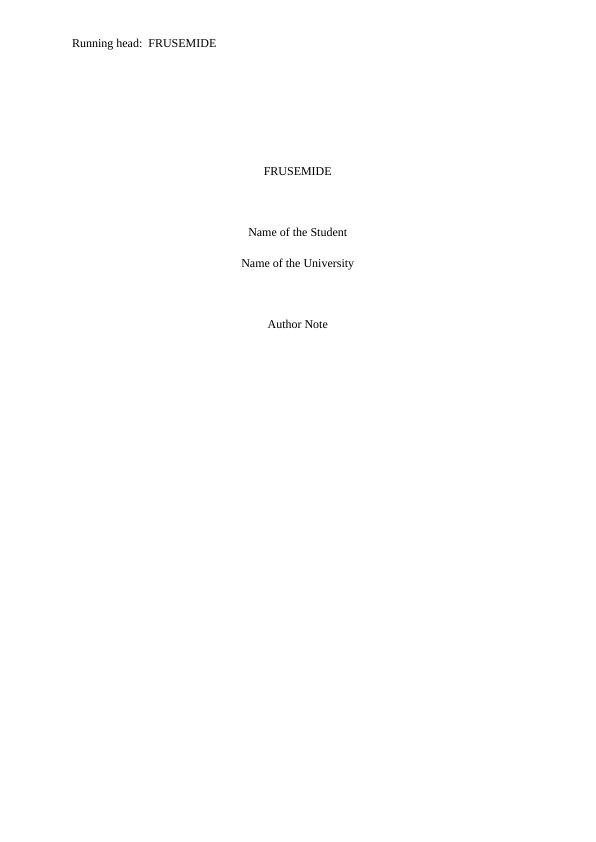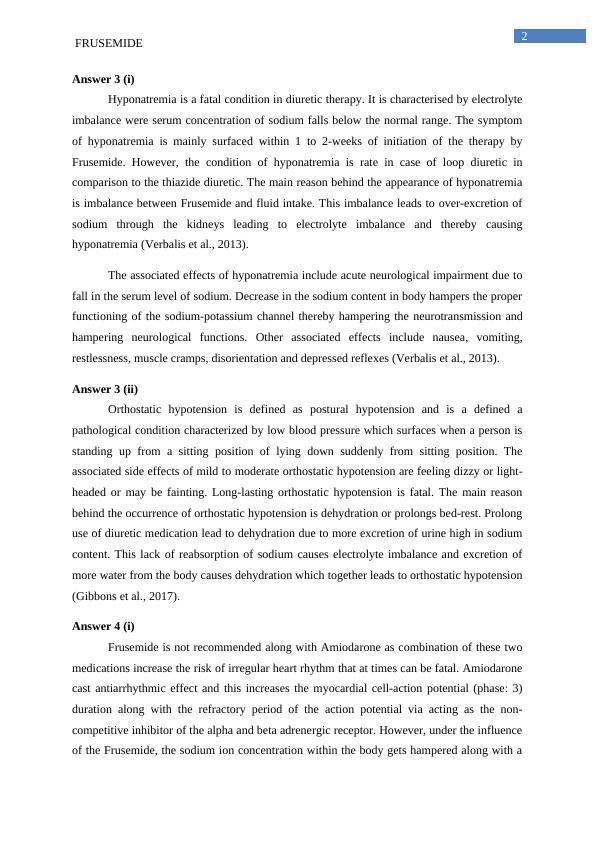Frusemide: Mechanism of Action, Side Effects and Contraindications
7 Pages2049 Words251 Views
Added on 2023-06-09
About This Document
This article discusses the mechanism of action, side effects and contraindications of Frusemide, a loop diuretic used for the treatment of oedema and chronic renal failure. It explains the risks associated with its use in combination with other medications and in patients with sodium and fluid depletion.
Frusemide: Mechanism of Action, Side Effects and Contraindications
Added on 2023-06-09
ShareRelated Documents
End of preview
Want to access all the pages? Upload your documents or become a member.
Fluid and Electrolytes Assignment
|11
|783
|105
Renal Function Lab Write-up Template
|5
|975
|111
Pharmacology Assignment with Questions and Answers
|6
|1474
|201
Heart Failure And Coronary Artery Disease
|8
|1336
|14



